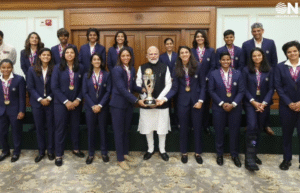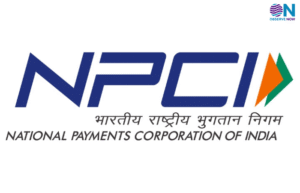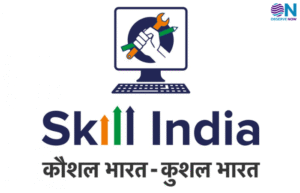New Delhi: Embarking on a professional journey toward becoming a Chief Underwriting Officer requires a comprehensive understanding of how the underwriting process has evolved, particularly in the face of technological advancements.
In recent years, the insurance landscape has witnessed transformative changes, shaping the way underwriters assess risk and make crucial decisions. This evolution brings forth a unique set of challenges for underwriters to navigate. From data analytics to emerging risks, staying abreast of these challenges is paramount. In this regard, Mansi Gupta, ObserveNow, interacted with Shashi Kant Dahuja, Chief Underwriting Officer, Shriram General Insurance Co. Ltd.
Here are a few excerpts from the interview:
Can you share a brief overview of your professional journey and how you came to be the Chief Underwriting Officer at Shriram General Insurance?
At present, I am serving as the Chief Underwriting Officer at Shriram General Insurance. I am a strategy planner with over 22 years of rich experience in the insurance industry. I hold a post-graduation degree in finance management from GGSIP University Delhi and am also a fellow member of the Insurance Institute of India & CII London holding a Chartered Insurer status. With that, I am also leading the product management committee of Shriram General Insurance & responsible for filing innovative products for SGI.
How has the underwriting process evolved over the years, especially in the context of technological advancements?
Technological advancements have significantly affected the insurance underwriting process in the last few years, bringing about improvements in efficiency, accuracy, and overall customer experience. Overall, technological advancements in insurance underwriting contribute to a more data-driven, efficient, and customer-centric approach to risk assessment and policy issuance. Insurers adopting these technologies can stay competitive and provide better services to their policyholders.
Here are some key ways in which advanced technology has influenced insurance underwriting.
- Data Collection: Insurers now have access to vast amounts of data, including social media activity, IoT devices, and other sources. This enables a more comprehensive understanding of the insured’s risk profile.
- Predictive Analytics: Advanced analytics help insurers predict risk more accurately by analyzing historical data patterns and trends. This allows for better risk assessment and pricing.
- Automated Underwriting: AI algorithms can automate the underwriting process by quickly analyzing data and making decisions based on predefined rules. This accelerates the underwriting process and reduces the need for manual intervention.
- Risk Prediction: Machine learning models can identify complex patterns in data to predict potential risks more accurately, improving the underwriting decision-making process.
- Online Applications: Insurers increasingly use digital platforms for the submission and processing of insurance applications. This improves the overall customer experience by providing a more convenient and efficient application process.
- Customer Self-Service: Digital portals allow customers to manage their policies, submit claims, and access information online, reducing the need for manual interactions.
- Mobile Apps: Insurers leverage mobile apps to streamline communication, claims processing, and policy management. This enhances the overall customer experience and allows for quicker responses to inquiries.
What are the major challenges faced by underwriters in the current insurance landscape, and how do you address them?
In the current insurance landscape, underwriters face various challenges that can impact their ability to assess risk accurately and make informed decisions. H some major challenges are the quality and availability of data can vary, and accessing relevant, up-to-date information is crucial for accurate underwriting which can be addressed by Investing in data quality management systems, establishing data-sharing partnerships, and leveraging emerging technologies like AI and machine learning to enhance data analysis and fill the gaps.
Also, Compliance with regulatory requirements is a significant concern, and underwriters need to ensure that their practices align with changing regulations while implementing robust compliance management systems, staying informed about regulatory changes, and investing in technologies that can help automate compliance checks and reporting.
With the increasing reliance on technology, underwriters face the risk of cybersecurity threats that could compromise sensitive data.
We are implementing strong cybersecurity measures, conducting regular security audits, and educating staff on cybersecurity best practices. Utilize encryption and secure data storage practices to protect against data breaches.
Customer expectations are evolving, and there is a growing demand for a seamless, digital, and personalized insurance experience. We have invested in digital platforms and technologies that enhance customer interactions, provide self-service options, and streamline the application and claims processes. Utilize data analytics to better understand customer preferences and offer personalized insurance products.
The insurance market is highly competitive, and underwriters must balance risk assessment with pricing strategies to remain competitive.
Which can be checked by continuously monitoring market trends and competitor offerings, and adjusting underwriting strategies accordingly Climate Change and Natural Disasters:
Increasing frequency and severity of natural disasters i.e. Tamilnadu floods pose challenges in accurately assessing and pricing related risks.
We are Enhancing risk modeling capabilities to better assess climate-related risks. Collaborate with climate scientists and leverage technology to incorporate climate data into underwriting models.
Addressing these challenges requires a combination of technology adoption, process improvements, and a proactive approach to staying informed about industry developments. Underwriters who embrace innovation and continuously adapt to changing conditions will be better positioned to navigate the complexities of the current insurance landscape.
Are there any innovative solutions or technologies that you have implemented to enhance the underwriting efficiency at Shriram General Insurance?
Technology is shaping up the insurance industry in a major way and we have also deployed AI spans in underwriting, claims processing, and customer service, amplifying risk assessment precision and expediting evaluations. The future holds grand vistas for AI and such technology in insurance, anticipating advancements in predictive analytics for unparalleled risk assessment precision. AI’s trajectory envisions refined customer interactions, ushering in an era of intuitive and proactive service experiences. AI, Chabot’s, machine learning, and block chain are providing good support to policyholders, intermediaries, and TPAs, With the use of accurate data, Insurers have started understanding market dynamics and accordingly launching more innovative products. New technology is making underwriting quicker and more efficient through API Integration with i.e. Vahan / IIB and other external sources. Technology is also improving customer retention and customer satisfaction through providing better service and faster processing times. Embracing this technological frontier, we foresee offering not just policies but tailored solutions, optimizing satisfaction and efficiency.
What advice would you give to aspiring underwriters looking to make a mark in the industry?
Remember that building a successful career in underwriting takes time and dedication. Stay committed to learning, growing, and adapting to the evolving landscape of the insurance industry. Some pieces of advice for aspiring underwriters looking to make a mark in the industry are:
Ensure you have a solid understanding of finance, economics, and risk management.
Consider pursuing relevant certifications.
Sharpen your analytical and critical thinking skills. Underwriting involves assessing complex data and making informed decisions to gain proficiency in using analytical tools and software commonly used in the industry. Attend industry conferences, seminars, and networking events to build relationships with professionals in the field.
Join professional organizations related to underwriting to stay connected with industry updates and peers.
Don’t be afraid to take on additional responsibilities or propose improvements to existing processes. Proactively seeking opportunities to contribute can set you apart.
Gain a broader understanding of the business you are underwriting for. Knowing the industry-specific challenges and opportunities will make you a more effective underwriter.
The evolution of the underwriting process in the insurance industry, driven by technological advancements, presents both opportunities and challenges. As highlighted by Dahuja, embracing innovations like data analytics, AI, and automation is essential for staying competitive and providing a customer-centric approach to risk assessment. Addressing challenges such as data quality, regulatory compliance, cybersecurity, and market dynamics requires a proactive and adaptable approach. The integration of technology, continuous training, and a focus on customer experience are crucial for enhancing underwriting efficiency in this dynamic landscape. Aspiring underwriters are advised to build a solid foundation in finance, stay updated with industry trends, and foster analytical and critical thinking skills to thrive in this evolving field.


























